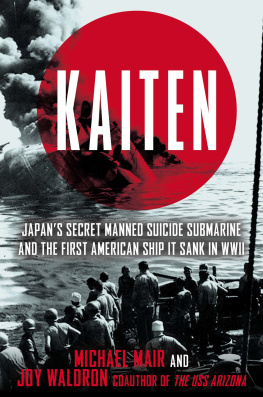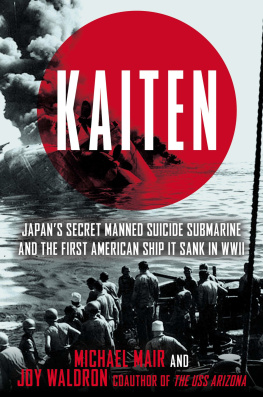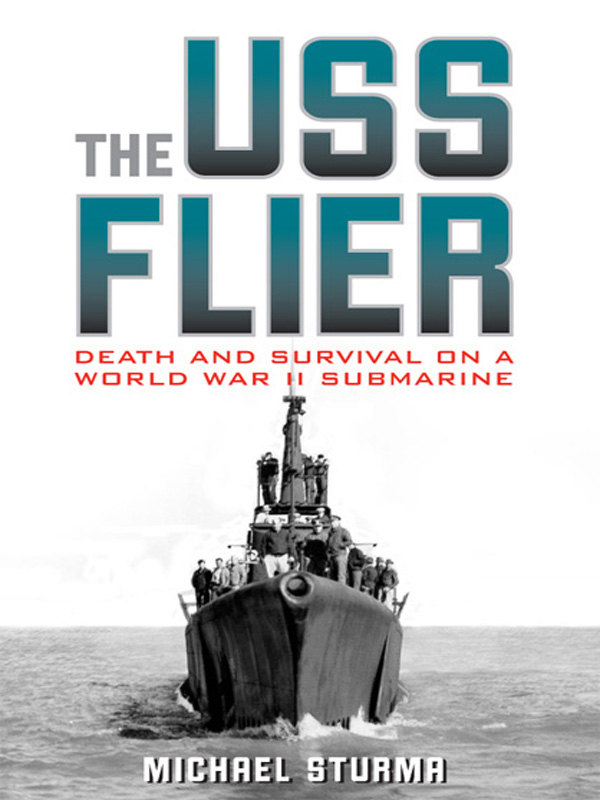Numerous people assisted in the research for this study. Charles Hinman and Nancy Richards extended the aloha spirit at the USS Bowfin Submarine Museum at Pearl Harbor. My special thanks to Charles for his lunchtime conversations and his Web site On Eternal Patrol. I am grateful to Steve Finnigan and Wendy Gulley for their assistance at the Submarine Force Museum at Groton, Connecticut. Carol Bowers and John Waggener of the American Heritage Center at Laramie provided invaluable help both at a distance and on the spot. Kathleen Lloyd of the Naval Historical Center, P. A. Leonard from the Office of the Judge Advocate General, and Patrick Kerwin from the Library of Congress made important contributions in piecing together the USS Fliers history.
I was fortunate to have the logistical help of Susan Witt, Wes Witt, and Barbara Eblen during my research in the United States. Closer to home, my friend and colleague Mike Durey provided a fount of naval knowledge. Peter Marks generously guided me through the Weld Club in Western Australia. Like much of my writing, this project benefited from the support of my wife, Ying.
I owe special thanks to Alvin E. Jacobson for sharing his memoirs and memories. I hope this book will serve as a tribute to the remarkable men of the Flier.
Prologue
The thirteenth proved unlucky for the USS Flier. On Sunday night, 13 August 1944, the submarine was speeding on the surface through the treacherous waters of Balabac Strait between Borneo and the Philippine island of Palawan. At 10:00 P.M. an explosion came without warning. In less than sixty seconds the submarine was plummeting toward the bottom of the ocean, leaving only fourteen of the crew struggling on the surface. After nearly eighteen hours in the water, eight men made it to land in enemy territory.
The story of the USS Flier has all the elements of a classic World War II survival tale: sudden disaster, physical deprivation, a ruthless enemy, friendly guerrillas, and an intricate escape. The eight men of the Flier became the first Americans of the Pacific war to survive the sinking of a submarine and make it back to the United States. It was rare for anyone from a lost submarine to ever be heard from again. Most often, submarines went down with all hands, and there was usually scant information about their last hours or days. The exceptions were the four submarines (S-36, S-27, S-39, and Darter) destroyed after running aground; in each case the entire crew was rescued. With the loss of fifty-two submarines and the death of more than 3,500 crewmen, the submarine service had the highest casualty rate of any branch of the U.S. military. There were known survivors from only eight submarines sunk during the Pacific war, and apart from the eight men of the Flier, all these survivors spent the remainder of the war in Japanese captivity.
At the end of the war, Tom Paine of the USS Pompon was one of the officers who assisted in repatriating these submariners from Japanese prisoner of war camps. As the men passed through the American base at Guam, Paine was appalled by both their pitiful condition and their small number. Among his class at the Naval Academy, thirty-five men had volunteered for service on submarines, and seven of them had been lost at sea. The death rate was about the same throughout the submarine service. Paine had been best man at the wedding of one of those lost with the USS Herring, and he had been introduced to his future wife, a member of the Women's Auxiliary Australian Air Force in Perth, by a former Annapolis classmate lost with the USS Lagarto.
The Fliers skipper, John Daniel Crowley, was among the handful of men who escaped the sinking submarine and evaded capture in enemy territory. He also survived a naval judicial system notorious for its ruthlessnesstwice. Earlier, the Flier had suffered a serious mishap on its first war patrol when it ran aground at Midway, resulting in the death of one crew member. Following a detailed inquiry into the incident, Crowley retained his command. After an extended period of repair, the Flier resumed its patrol, sailing from Pearl Harbor to the submarine base at Fremantle, Western Australia. The Flier was still in the early part of its second war patrol when it sank in Balabac Strait, this time leaving most of the crew on eternal patrol, as the sailors put it. Despite a second formal inquiry after the Fliers loss, Crowley would later be given another submarine command.
The naval inquiries, along with the Fliers checkered history, open a rare window on the inner workings of the wartime silent service. After the attack on Pearl Harbor, submarines became the first branch of the military to carry the fight to the enemy's doorstep. Although the major battles of the Pacific war were fought by aircraft carriers, U.S. submarines strangled the Japanese supply lines. Submariners represented less than 2 percent of U.S. Navy This effectiveness was due in part to the fact that the activities of the submarine service were closely guarded secrets.
Although some of the Fliers mysteries remain hidden beneath the sea, its fate reveals the vagaries of both underwater warfare and naval protocols. At one level, the Fliers story suggests a high degree of cooperation among submariners, coast watchers, and guerrillas in the Philippines. At another level, it illustrates the infighting and personality clashes within the submarine command. The ordeal of the Fliers crew and their loved ones also highlights the trauma and personal tragedies of the Pacific war, which were often obscured by acts of heroism.









